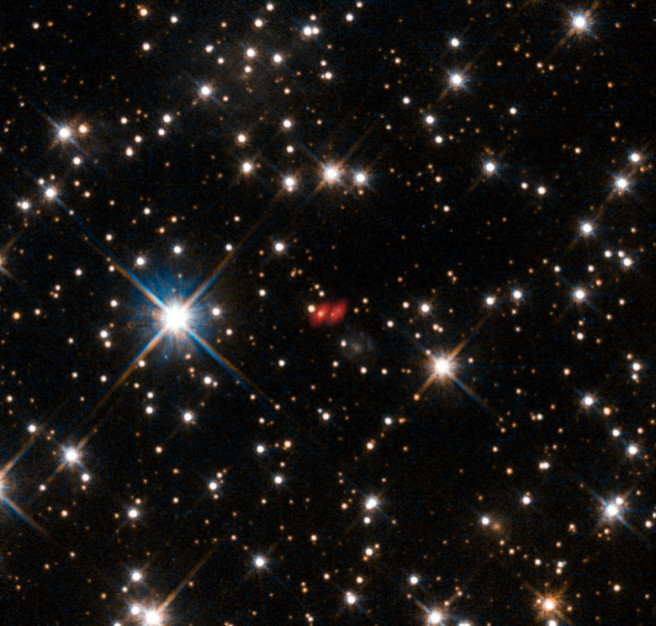Jets From Supermassive Black Holes Help Regulate Galactic Formation And Star Formation Activity
Black holes are known for devouring dust, gas and even stars, but there is also some material that gets ejected from these objects. Commonly referred to as jets, these streams from supermassive black holes at the center of many galaxies, such as our own Milky Way, can help shape how galaxies form.

Researchers using the European Southern Observatory’s Atacama Large Millimeter/submillimeter Array, ALMA, in the Chilean desert observed a jet from the supermassive black hole at the heart of galaxy NGC 1433 and another jet from PKS 1830-211. The two studies were quite different as the black hole at the center of NGC 1433 is not very active while the black hole found in PKS 1830-211 is incredibly active.
The first study, led by Françoise Combes from the Observatoire de Paris, France, discovered that the gas around the black hole at the center of NGC 1433 has a spiral structure, which allows for material to fall into the black hole. Further observation revealed a "small," extending for 150 light years, jet of material being ejected away from the black. “We have discovered a jet of material flowing away from the black hole, extending for only 150 light years. This is the smallest such molecular outflow ever observed in an external galaxy,” said Combes in a statement released by ESO.
According to ESO, as the black hole attracts more material, known as accretion, it grows and becomes more active. The jet of material that is ejected from the hole could carve out a path in the surrounding area, disrupting the star formation activity in the region.

The second study focused on PKS 1830-211 and was led by Ivan Martí-Vidal, from the Chalmers University of Technology, Onsala Space Observatory, Onsala, Sweden. The black hole at the center of this galaxy is more active and may have recently devoured a massive object, such as a molecular cloud or a star, as it has a bright jet of material being ejected from the black hole.
Black holes are more active when they are younger; the black hole at the center of NGC 1433 is younger than the black hole at the center of PKS 1830-211. According to the ESO, it took 11 billion years for light from PKS 1830-211 to reach Earth compared to 30 million years for light from NGC 1433 to reach Earth.
PKS 1830-211 is an interesting galaxy to observe for astronomers as its light undergoes gravitational lensing on its way to Earth. Gravitational lensing occurs as light bends around a massive object, such as another galaxy, creating two images or distorting the image seen by astronomers.
According to the astronomers, they got lucky while observing PKS 1830-211 and discovered the new material entering the black hole. Data collected by NASA's Fermi Gamma-ray Space Telescope also detected the event as the accretion emitted gamma rays, high frequency electromagnetic radiation.
Previously, Hubble spent 13 years observing a jet from the black hole at the center of the M87 galaxy. The jet has a spiral shape that is formed by the magnetic field of the accretion disk surrounding the black hole and astronomers also discovered interesting gas clump movements, including Knot B, which moves in a zigzag pattern.
Both studies were published in the journal Astronomy & Astrophysics. Combes' team is currently observing other active galaxies while PKS 1830-211 will continue to be a focal point of research efforts. Videos of NGC 1433 and PKS 1830-211, courtesy of ESO, can be viewed below.
© Copyright IBTimes 2024. All rights reserved.






















